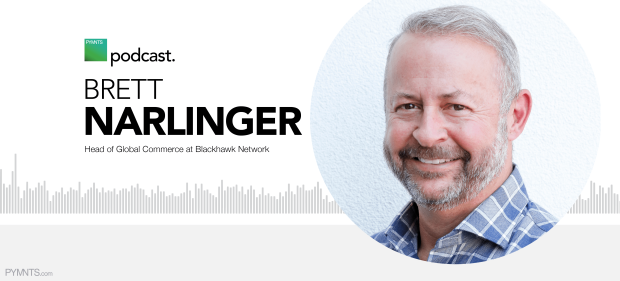Tapping The Power of Personalization To Build Retail’s Next Normal

Well, now what?
That’s the question all companies are asking as they internalize the impact of the shift to digital on their customers, their businesses and their future.
The challenge — particularly for retail — is getting clarity around that “next normal” for businesses, PYMNTS CEO Karen Webster noted in a recent discussion with Brett Narlinger, head of global commerce at Blackhawk Network. How should retail prepare for the next normal when it’s not clear what shape that will take or how long it will require for that clarity to emerge?
Narlinger told Webster that although the world has changed fundamentally in the past three months, the real wildcard is which digital habits will stick and which are just temporary breaks in the brick-and-mortar action.
His take? Yes, consumers will “get back to shopping in person” — but many digital methods will stick. “They’re not going to go away,” Narlinger said.
Preparing for that next normal means businesses will have to rethink the consumer journey: how they shop, where they start their journey and what it means to build and sustain loyalty. The changes won’t happen overnight, but Narlinger said that successful companies need to start revising things sooner rather than later.
Remapping The Customer Journey
For all the things that COVID-19 has changed, Narlinger said, retailers looking to build a path forward might want to focus on what remains the same.
“The one thing that hasn’t changed is consumers still need to consume,” he said. “They still need groceries. They still want to celebrate birthdays. They still want to give gifts. They still need to buy goods and services. The [businesses] that are best adapting to the new normal are asking: ‘How do we get them those things? How do we create these seamless omnicommerce experiences?’”
Narlinger said retailers’ goals should involve building end-to-end transactional experiences that users will find comfortable. He said that means making things feel safe from a public-health perspective — for example, by embracing the contactless payments journey.
But as Narlinger pointed out, there’s no one-size-fits-all approach. Rather, the priority going forward will be to open up choices. Merchants must meet consumers in any channel where they want to shop, he said, with the ability to complete a transaction and pay by any mechanism that customers choose.
But merchants big and small are seeing that the time to pursue these changes is now, noted Narlinger. Merchants must also look to technology to help them take that next big step toward customizing the commerce journey, end-to-end, around consumers’ comfort.
“I think the biggest thing everybody should be leaning on right now is the technological advances that are happening, so they can leverage the ability to tap into things they didn’t once have the ability to do,” Narlinger said.
Customizing Loyalty And Rewards Programs
Narlinger believes that one place to leverage the idea of personalization is in how merchants offer loyalty and rewards programs.
As recently as six months ago, companies saw offering “points” — fuel points, airline miles, etc. — as a favored means of generating customer loyalty. But pandemic-related changes to consumer habits have spurred a great rethinking of how to keep customers loyal and offer rewards that they find truly rewarding.
The quest, Narlinger said, is to offer relevance to consumers through offers that are personalized to match their actual needs, product uses and shipping habits. He said companies can analyze the data points they have on hand to decide what offers to put in front of each customer.
“The nice things about the use of technology at the point of sale and online is the amount of data you’re able to recognize without being obtrusive and intrusive,” Narlinger said. “You can get to a level of personalization where you’re able to [offer] value back to a consumer that’s relevant. It’s not the days where you bought 10 things and got a coupon for something that made no sense. This is real loyalty. These are real rewards.”
He noted that companies can use data to come up with things that customers really want, such as gift cards to places they frequent, offers that are tailored to their specific spending patterns or the ability to turn their rewards directly into cash. For instance, Narlinger said someone who’s lost a job has a much more acute need for cash to buy groceries than airline miles saved in a digital wallet. And merchants of all sorts are more open than ever to new ideas about how to bring in customers and keep them coming back, he said.
“We have a long way to go until [rewards] are truly personalized, but I think we’re getting closer and closer,” Narlinger said. “As a consumer, I want my reward to be my choice. We’re seeing a significant shift toward something that is meaningful to a consumer, because if they feel a connection and they see something that [shows you] we’re paying attention, that is going to make those next-level connections we’re going to see in the next normal.”
